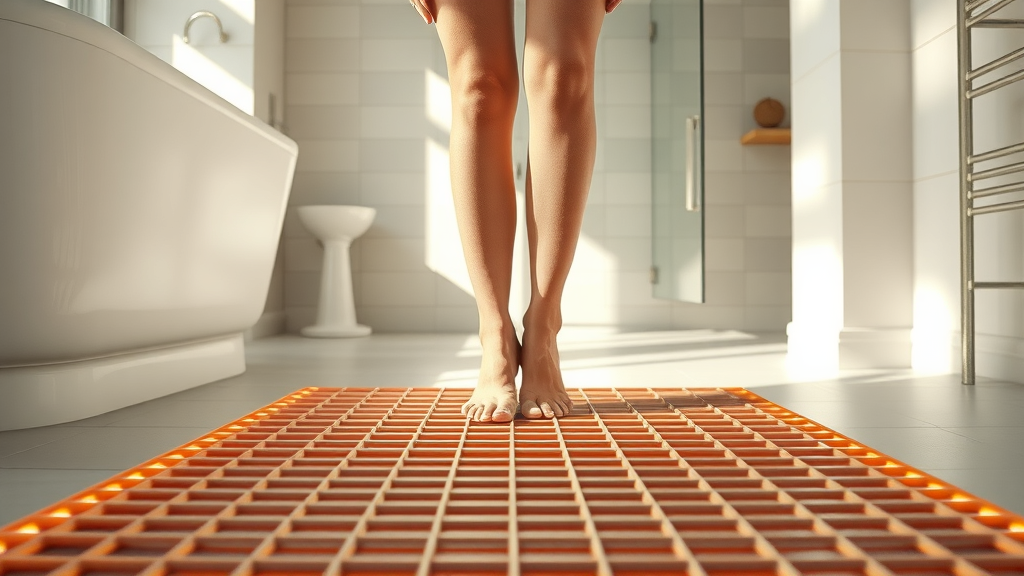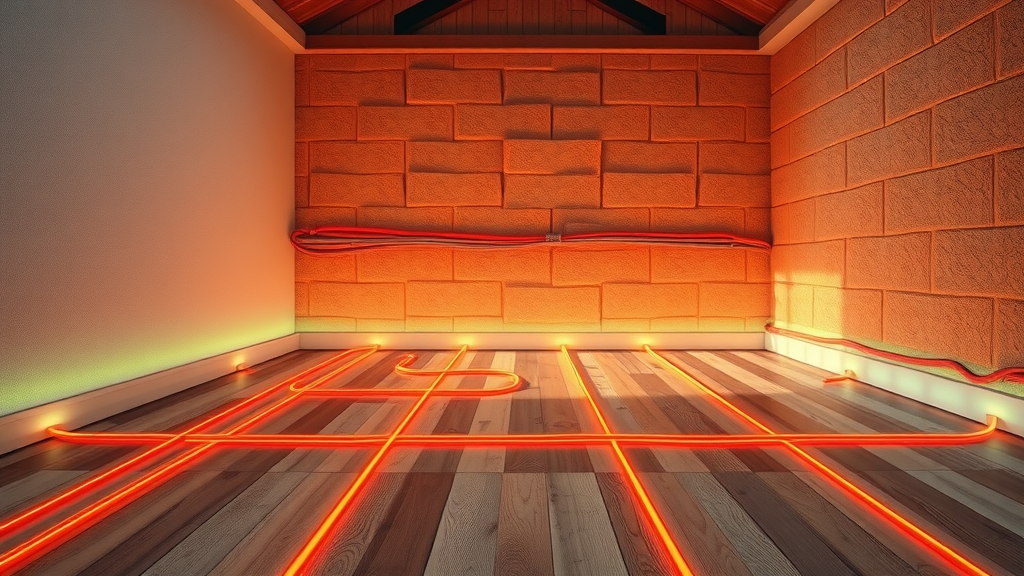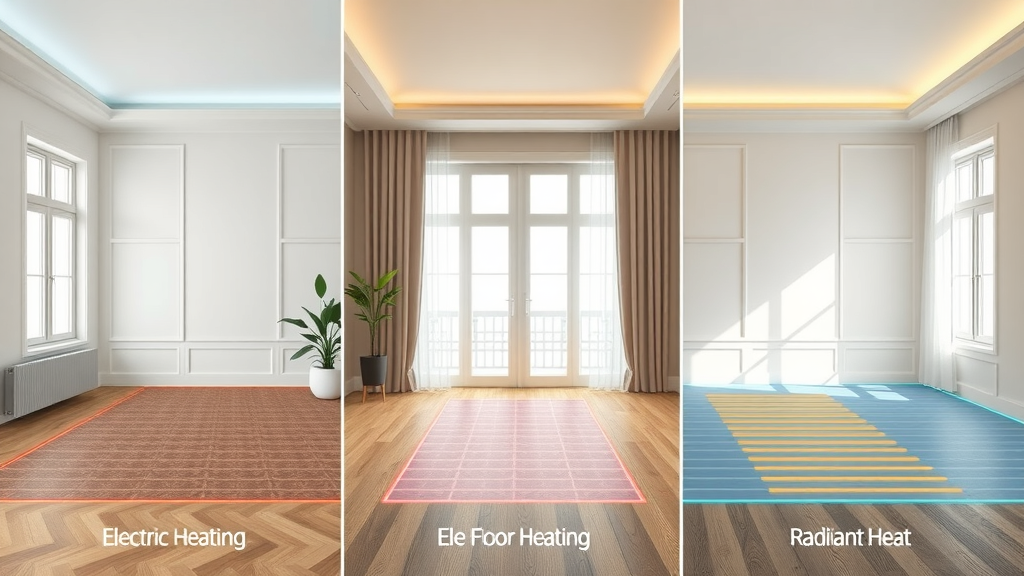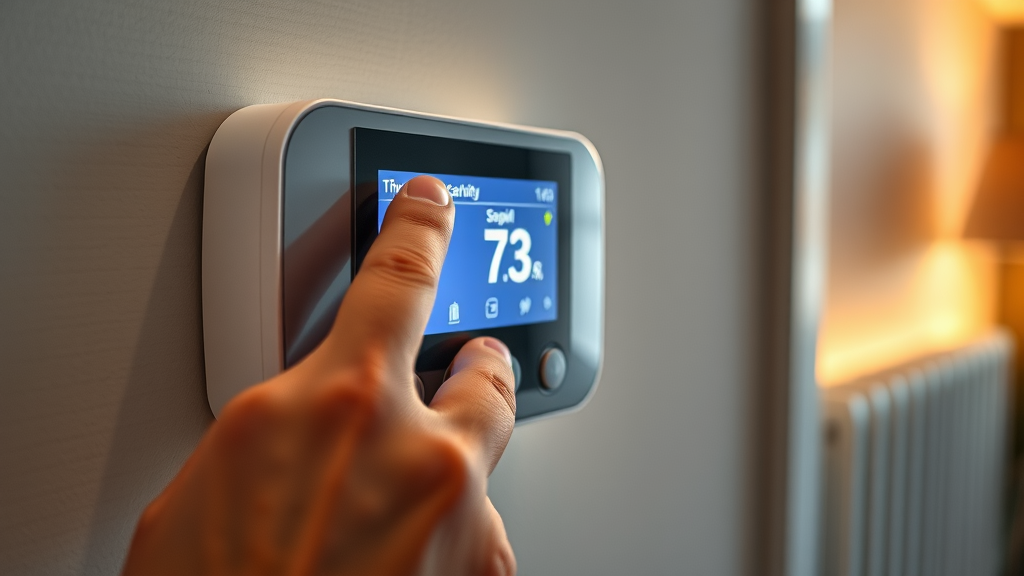Did you know? Electric underfloor heating can reduce your home's energy use by up to 25% compared to traditional radiator systems, all while delivering luxurious comfort every morning . If you’ve ever dreaded stepping onto a freezing-cold floor, this revolutionary heating system will change your life. Dive in to see how quick warmth and low electricity bills unite—creating the modern comfort you (and your toes) deserve.
Unlocking Savings and Luxury: Why Electric Underfloor Heating Outperforms Traditional Floors
Electric underfloor heating systems are quickly becoming the gold standard for modern home comfort. Unlike bulky radiators or forced-air systems, these heating systems work by gently warming the entire floor, letting you enjoy consistent heat from the ground up. The result? Uniform warmth with no cold spots and the freedom to design your rooms without worrying about where to place radiators or vents.
The difference between classic heated floor methods and electric underfloor heating is day and night. Traditional approaches often leave hot and cold patches, take up valuable space, and circulate dust. In comparison, electric underfloor heating is clean, safe, and hidden. Your home feels cozier, looks sleeker, and your energy bills may go down. For families, couples, or anyone wanting a touch of luxury, it’s the future of floor heat—well within reach.

What You’ll Gain by Switching to Electric Underfloor Heating
- Understanding electric underfloor heating systems
- Identifying the best floor heating system for your needs
- Comparing energy efficiency and operating costs
- Learning installation and maintenance insights
- Reviewing real customer experiences and expert tips
How Electric Underfloor Heating Systems Deliver Consistent Floor Heat
One of the biggest questions homeowners ask: "How does floor heating work?" The answer lies in the technology behind radiant floor heating and underfloor heat distribution . With electric underfloor heating, specially designed heating mats or heating cables are fitted beneath your chosen floor covering—tile, laminate, wood, or carpet. When the system is powered on, these elements gently radiate heat upwards, warming the floor evenly across the entire space.
The beauty of this setup is the even heat distribution . Unlike forced-air systems that push hot air to certain corners, electric underfloor heating systems ensure every inch of the floor is pleasantly warm . You can say goodbye to chilly toes as you walk from the bathroom tile to your cozy bedroom carpet! This consistency is especially prized in bathrooms and kitchens, where cold floors can make mornings feel less inviting.

The Science Behind Radiant Floor Heating and Underfloor Heat Distribution
- How radiant floor and heated floor technologies work
- Role of heating mats and cables in floor heating systems
- Integration with electric and radiant floor heating systems
If you're interested in a more detailed look at how electric underfloor heating can be tailored for specific spaces and needs, you might find this guide on electric underfloor heating solutions in Chesterfield especially helpful. It covers practical installation tips and local insights for achieving rapid, efficient warmth.
Comparing Electric Underfloor Heating, Electric Floor, and Radiant Heat: Which Heating System is Best?
There are several ways to bring warmth to your floors, but how do electric underfloor heating, electric floor heating, and radiant floor heat stack up? Electric underfloor heating systems are prized for their quick response time and compatibility with nearly any floor covering—from stone to laminate and even soft carpet. Simple electric floor heating mats are easiest to install, but may sacrifice some energy efficiency and flexibility. Classic radiant floor heat, which uses hydronic systems, shares many benefits with the electric version, but comes at the cost of more complex installation.
Deciding between these heating systems often depends on your renovation needs, budget, and the type of floor heat you want to achieve. The table below gives a quick at-a-glance comparison, highlighting where each system shines.
| Feature | Electric Underfloor Heating | Electric Floor Heating | Radiant Floor Heat |
|---|---|---|---|
| Energy Efficiency | High | Medium | High |
| Response Time | Fast | Medium | Medium |
| Ease of Installation | Moderate | Easy | Moderate |
| Maintenance | Low | Moderate | Low |
| Compatibility | Tile, stone, laminate, carpet | Tile, laminate | Tile, stone |

Top Features of a Modern Electric Underfloor Heating System
What makes a modern electric underfloor heating system so attractive? It all comes down to smart design and tailored comfort. Let’s break down the most popular features that homeowners and experts love.
- Energy efficient temperature control : Today's programmable thermostats let you adjust floor heat to your daily routine, boosting savings without sacrificing comfort.
- Low-profile heating mats and cables : These take virtually no space, fit under any type of flooring, and don’t require major floor buildup.
- Adaptability to floor coverings : Modern systems work with tile, stone, wood, laminate, and carpet, ensuring every room gets just the right touch of warmth.
- Programmable thermostats : Just set and forget—wake up to perfectly warm floors every day with ease.
Expert Quote: "Electric underfloor heating delivers uniform comfort without cold spots, efficiently reducing your energy bills." — Lead Engineer, Peak Underfloor Heating
Energy Efficiency and Cost: Does Electric Underfloor Heating Use a Lot of Electricity?
Many homeowners worry about costs before making the switch: "Does electric underfloor heating use a lot of electricity?" In reality, these systems are some of the most energy efficient heating technologies out there. Because the heat is distributed evenly and rises naturally, you can typically keep the thermostat lower while still feeling toasty. Plus, when paired with quality insulation and smart thermostatic controls, your floors only heat up when you truly need them.
Compared to old-fashioned radiators and baseboard heaters, electric underfloor heating systems often consume less energy over time. Zoning options and programmable timers ensure unused rooms aren't needlessly heated. The savings stack up month after month—and you can see how below.
Understanding Operating Costs and Budget-Friendly Heating Solutions
- Energy consumption vs. traditional heating systems
- Thermostatic controls for maximum savings
- How electric underfloor heating impacts monthly bills

Table: Sample Monthly Costs for Electric Underfloor Heating by Room Size
| Room Size (sq ft) | Typical Monthly Cost | Estimated Energy Use (kWh) |
|---|---|---|
| Bathroom (50) | $8 | 40 |
| Bedroom (150) | $24 | 120 |
| Living Room (250) | $40 | 200 |
Installation and Maintenance: How Easy is It to Add Electric Floor Heating or Radiant Floor Heat?
Contrary to what you might think, adding a floor heating system isn’t as tough as it sounds. Many modern electric floor heating systems are designed for easy, mess-free installation—perfect for both new homes and remodels. The process usually involves rolling out heating mats or positioning heating cables over your subfloor, then laying your chosen floor covering on top. Some systems are specifically designed for DIY installation, with simple step-by-step guides included.
Maintenance is practically effortless. Electric underfloor and radiant floor heat technologies have no moving parts, so there’s little that can go wrong. A yearly thermostat check and regular visual inspections ensure optimal performance for years to come. Professional installation, however, is always recommended if you’re unsure, or if your space is complex.
- Step-by-step guide for installing heating mats and cables
- Choosing the right underfloor heating system for your space
- Maintenance tips for long-lasting performance

Customer Reviews: Real Feedback on Electric Underfloor Heating Systems
The comfort and value of electric underfloor heating systems shine in real-life testimonials. Homeowners consistently rave about how quickly the heat comes on and how friendly these systems are for their energy bills. Barefoot mornings on tile or laminate are no longer a shock, but a delight.
Families report noticeable savings compared to traditional floor heating , and most find these systems to be nearly maintenance-free. Their homes are cleaner—no dust kicked up by forced air—and quieter, too, with no banging radiators or fans humming at night.
- Testimonials on quick warmth and comfort
- Ratings of energy efficient heating systems
- Case studies: electric underfloor heating vs. traditional floor heating

Key Considerations When Choosing an Electric Underfloor Heating System
Before you install a floor heating system , it’s important to weigh a few key factors. First, check whether your chosen floor covering —tile, wood, laminate, or carpet—matches the heating mat or cable type you’re interested in. Second, consider the size of your room and how well it’s insulated; better insulation means quicker heat-up times and more efficient operation.
You’ll also want to balance the upfront cost against long-term savings . Electric underfloor heating may have a higher initial price than simple baseboard heaters, but the energy efficiency and comfort can lead to monthly utility savings that quickly add up. Lastly, think about whether an electric floor heating system, a full-blown radiant floor heat installation, or a hybrid solution fits your lifestyle, renovation plans, and budget.
- Floor covering compatibility (tile, wood, laminate, carpet)
- Room size and insulation quality
- Comparing electric floor heating vs. radiant floor heat
- Budget: upfront costs and long-term savings
"Choosing the right electric underfloor heating system is vital for maximizing home comfort and minimizing energy usage."
People Also Ask: Is Electric Under Floor Heating Expensive to Run?
Answer: Electric underfloor heating is typically cost-effective, especially when installed with modern thermostats and good insulation. While the upfront investment can be higher than conventional heaters, ongoing electricity use is minimal when run efficiently, often comparable or lower than alternative systems.
People Also Ask: What Are the Disadvantages of Electric Underfloor Heating?
Answer: The primary disadvantages are the initial cost of installation and slightly slower heat-up times under thick floor coverings or poor insulation. However, these issues are often offset by improved energy efficiency and the comfort of a consistently warmed floor.
People Also Ask: Is It Worth Having Electric Underfloor Heating?
Answer: For many homeowners, investing in electric underfloor heating is worthwhile due to the long-term energy savings, increased property value, and enhanced comfort. The convenience of a programmable, invisible heating system appeals to both renovators and new builders.
People Also Ask: Does Electric Floor Heating Use a Lot of Electricity?
Answer: Modern electric floor heating systems are highly energy efficient and typically use less electricity than traditional radiators or forced-air systems, especially when zoned or paired with programmable controls.
Frequently Asked Questions on Electric Underfloor Heating
-
What is the best type of floor covering for electric underfloor heating?
Tile and stone are the most efficient, but modern systems also work well with engineered wood, laminate, and even some carpets. -
How long does it take to heat a room with electric underfloor or radiant floor heat?
Most rooms reach a comfortable temperature in 20-40 minutes, though time depends on floor covering and insulation. -
Can radiant floor heating be installed in any room?
Yes, electric radiant floor heating systems are flexible enough for bathrooms, kitchens, bedrooms, and living areas. -
How do I maintain my electric floor heating system?
Little maintenance is needed beyond checking thermostats and occasional inspections; most systems are designed for years of hassle-free use.
Key Benefits of Electric Underfloor Heating and Final Thoughts
- Instant warmth, every morning
- No dust, no visible units—pure, clean comfort
- Low energy usage with advanced controls
- Suitable for new builds and retrofits alike
"Upgrade your home comfort—electric underfloor heating turns any floor into a luxury experience."
Ready for Quick Warmth? Trusted Experts for Electric Underfloor Heating Solutions
For expert help or advice visit Peak Underfloor Heating at https://peakunderfloorheating.com/
If you’re eager to take your knowledge even further and want to explore the broader world of underfloor heating, including advanced comfort strategies and system selection tips, don’t miss our in-depth resource on how to choose the best underfloor heating system for your home . This guide offers expert advice on comparing system types, optimizing energy efficiency, and making the smartest investment for your living space. Whether you’re planning a renovation or building from scratch, it’s the perfect next step to ensure your home stays warm, efficient, and future-ready.
Sources
- U.S. Department of Energy – https://www.energy.gov/energysaver/radiant-heating
- This Old House – https://www.thisoldhouse.com/heating-cooling/21018310/your-guide-to-radiant-floor-heating
- Peak Underfloor Heating – https://peakunderfloorheating.com/
Electric underfloor heating offers a modern solution for home comfort, providing efficient and consistent warmth. For a comprehensive understanding of its advantages, the article “The advantages of electric underfloor heating” by Etherma ( etherma.com ) details how these systems convert electricity directly into heat, ensuring high efficiency and rapid response times. Additionally, Warmup’s “Electric Underfloor Heating Systems” ( warmup.com ) explores the versatility of electric underfloor heating, highlighting its compatibility with various floor coverings and its suitability for both new constructions and renovations. If you’re considering upgrading your home’s heating system, these resources provide valuable insights into the benefits and applications of electric underfloor heating.
 Add Row
Add Row  Add
Add 









Write A Comment